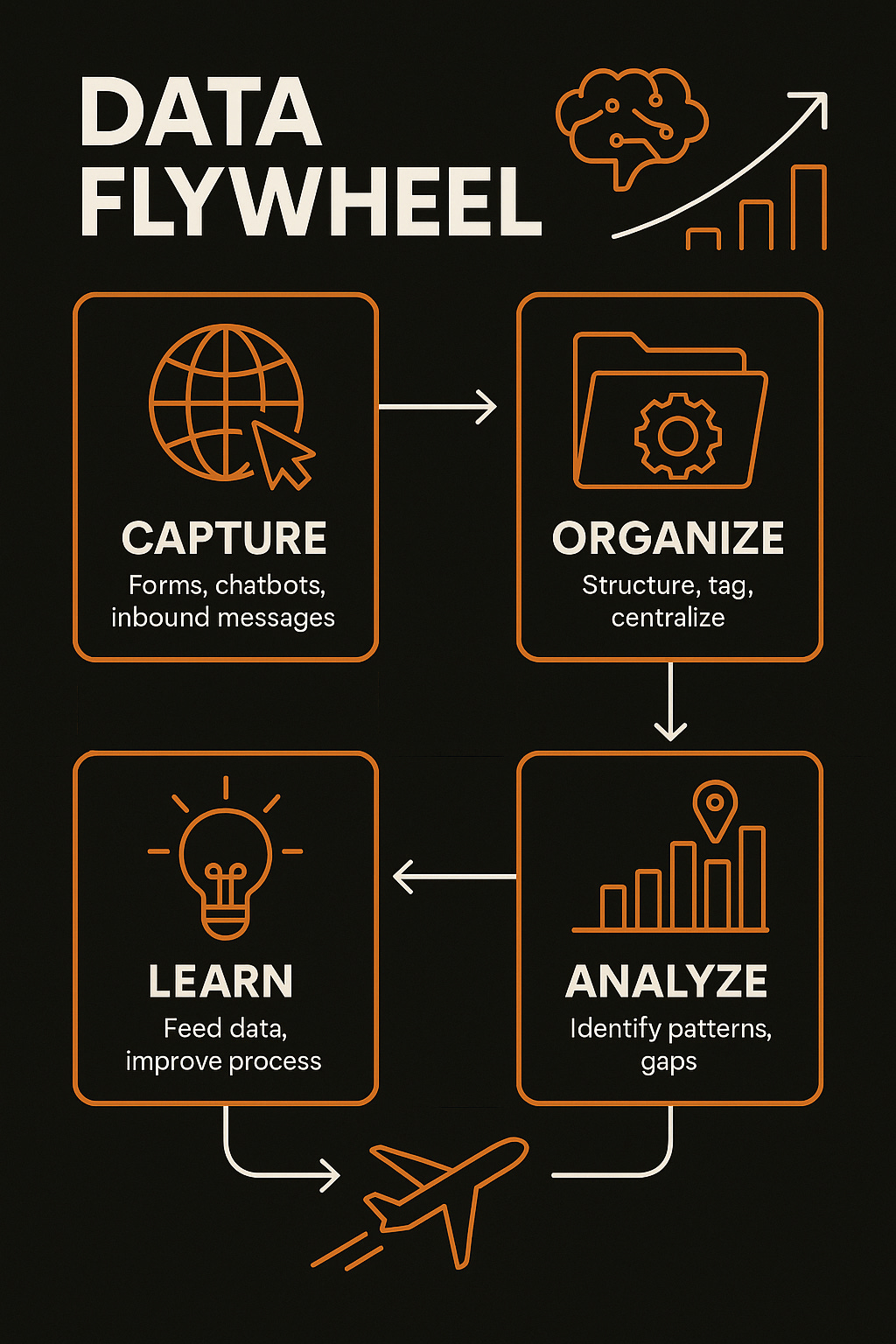Data and AI: What No One Wants to Talk About
The uncomfortable middle between ambition and reality.
Everyone wants AI. But, no one wants to fix their data.
That’s the quiet truth behind the flashy demos, GPT wrappers, and “AI-first” product roadmaps.
And I totally get it, the ambition is exciting: autonomous agents, real-time insights, personalized customer journeys at scale. BUT,
Most businesses (SMBs) are trying to automate broken systems.
They want intelligence layered on top of bandaid solutions.
They want prediction without structure and results without the reality check.
Let’s unpack what’s really going on, and what needs to happen before AI can truly drive results.
1. AI Doesn’t Work Without (Good) Data
This isn’t just a technical point. It’s strategic.
AI models learn from the past to predict or act in the present. But what if your past data is full of gaps, noise, or inconsistencies?
Now, let’s not confuse this with needing more data.
You just need better data which is structured, cleaned up, contextual, and connected across your systems.
Here’s what bad data looks like in practice:
Leads logged without source or UTM info.
Deals closed but never updated in the CRM.
Customer success notes in someone’s Notion/ chat, not the shared system.
A chatbot handing off to sales… with no conversation history or context?
Now imagine trying to train an AI to optimize your funnel, qualify leads, or improve retention, based on that.
You can’t scale what you don’t understand and the same is true with AI.
2. The Infrastructure is Still Broken
Despite all the hype, we’re still early.
Recent reports show:
Only 16% of organizations have a mature AI strategy.
80%+ still lack foundational data infrastructure. Basics.
Most SMBs still operate from spreadsheets, siloed apps, or outdated CRMs and they are not ready to change.
There are fancy jargons like MCP, AI Agents and designing LLM agents to talk to each other, while real businesses still copy-paste leads from Gmail into Salesforce.
There’s a huge gap between AI ambition and operational reality. Then there’s a much wider gap between ground reality and the hype flooding LinkedIn, TechCrunch, and every leading AI newsletter out there. Whilst there are new tools and powerful features getting released, businesses lack basic education on what fits their systems, their pain points and (lack of) processes.
And that’s where most initiatives stall. Not because of the tools, but because of the plumbing.
3. Your Process is the Real IP
Clear processes are your IP.
I quote this often, think of AI as an intern/ a junior team memeber with infinite potential:
It learns fast.
It works 24/7.
But it needs structure and feedback.
Without SOPs, documentation, or mapped workflows, AI becomes a broken engine.
It starts making decisions based on broken inputs, or even worse, creating new messes faster than you can catch them.
What works instead?
System → Process → Data → AI
If you don’t have that flow, you don’t have leverage. You have experiments.
4. The Data Flywheel: How the AI Value Compounds
Let’s talk systems. The true value of AI doesn’t come from plug-and-play tools. It comes from building a data flywheel that compounds value over time.
Here’s how it looks:
Step 1: Capture
Start where value enters: forms, chatbots, inbound messages, booking engines.
Ask: Are we collecting the right data at the right point?
Step 2: Organize
Where does the data go? Is it structured? Tagged? Centralized?
Messy data lives forever if not cleaned up early.
Step 3: Analyze
Look at patterns: What’s working? Where do leads drop? Where does CS spend time?
Data without context is noise. Make it usable.
Step 4: Automate
Now and only now take time to review where you could plug in AI to take over parts of the process.
Think: lead qualification, auto-routing, personalized emails, follow-up reminders.
Step 5: Learn
Let the data from those automations feed back into your system.
Tighten the loop, make smarter decisions, and evolve the process.
This is where AI earns its keep, not in a demo, but in a loop.
Questions to Ask Before “Doing AI”
Here’s a mini diagnostic to sanity-check whether your org is ready:
✅ Do we have consistent data capture at key touchpoints?
✅ Are our tools integrated, or are we copy-pasting between them?
✅ Do we have repeatable workflows mapped out (even manually)?
✅ Do we have feedback loops between people and data?
✅ Are we clear on the problem we want AI to solve?
If you can’t check most of these, don’t start with AI.
Start with process mapping. Start with cleaning up your CRM. Start with connecting your tools.
Start with clarity.
Finally,
AI is not a fix-all. If your process is strong, your data clean, and your goals clear, you can unlock massive leverage through AI.
If your process is unclear, and your systems scattered, AI will only scale the dysfunction.
We need to stop treating AI like a shortcut, and start treating it like a strategy.
Build the system.
Fix the plumbing.
Then automate.
About the author:
Sahan Rao is a marketing strategist and AI consultant with 15+ years leading growth, GTM, and lifecycle campaigns across SaaS, finance, and tech. As the founder of LeadAi Solutions, she helps SMBs build smarter systems using AI by bringing process clarity, creative agility, and ethical automation into every solution. Equal parts marketer, builder, and people-first thinker, Sahan is passionate about turning complex customer journeys into simple, scalable experiences.



Ai doesn’t work without good data, that’s great!